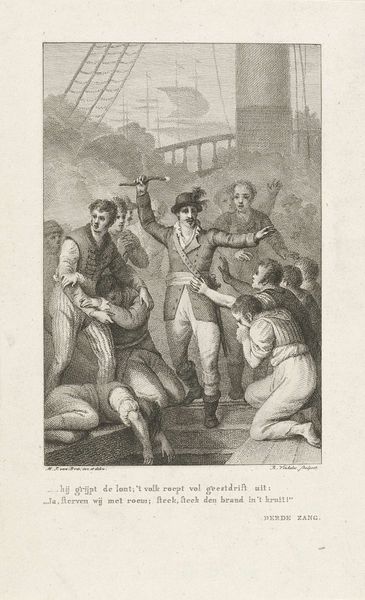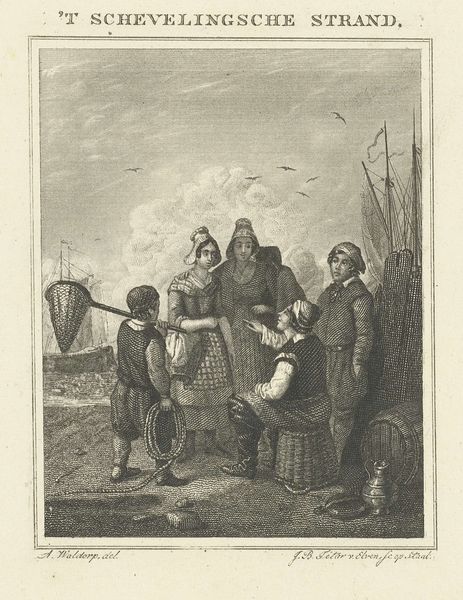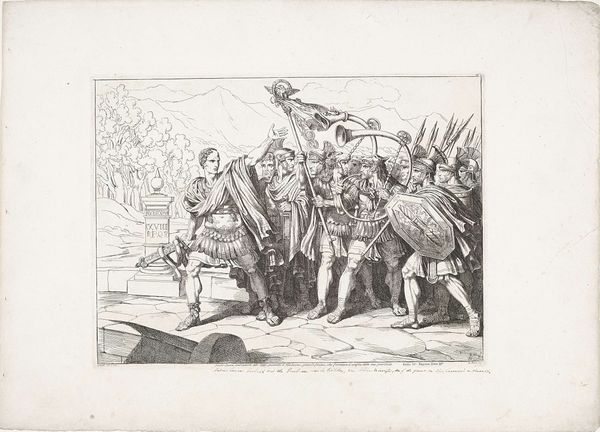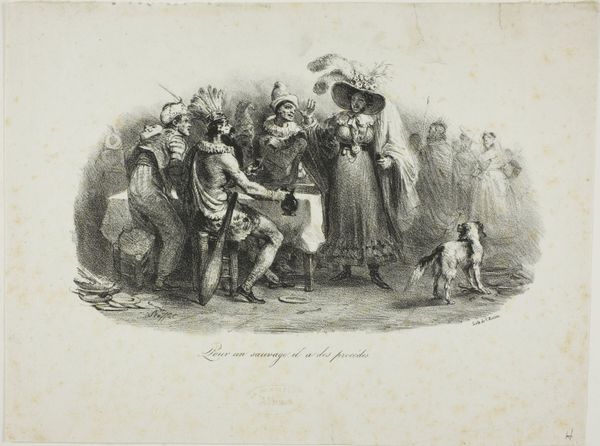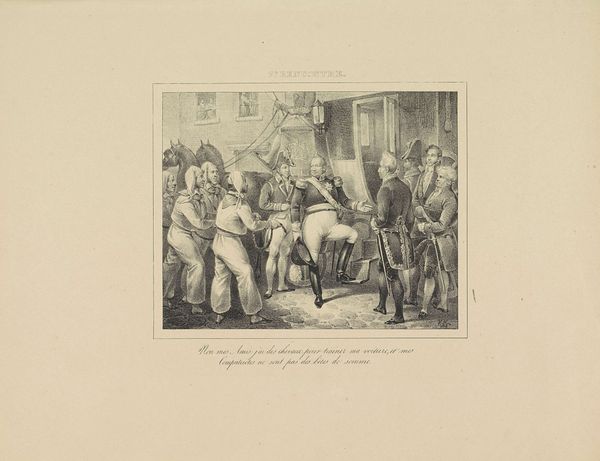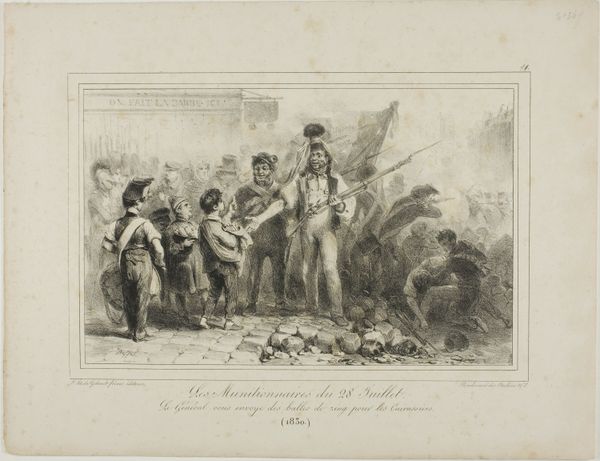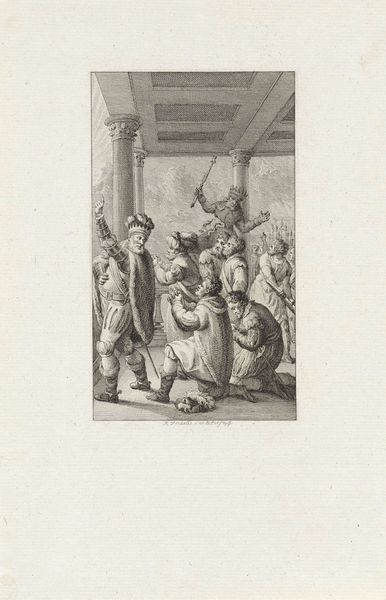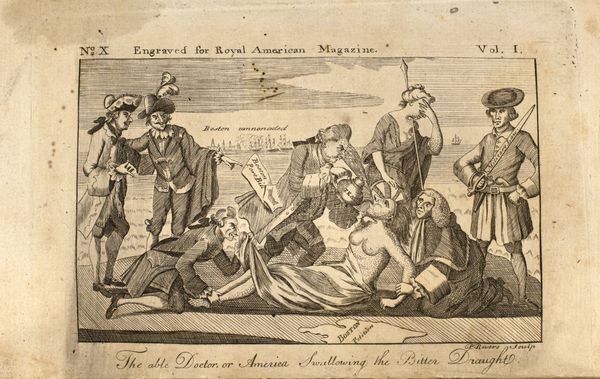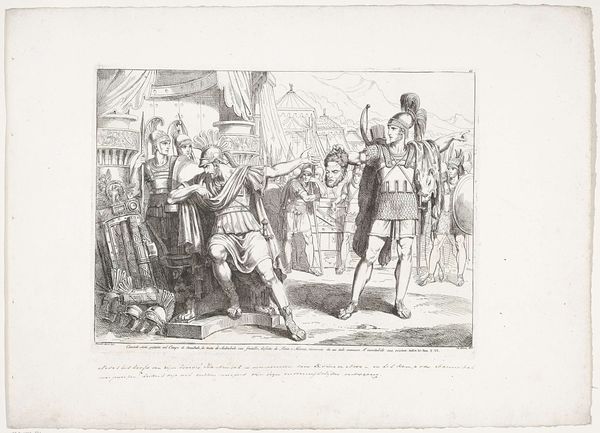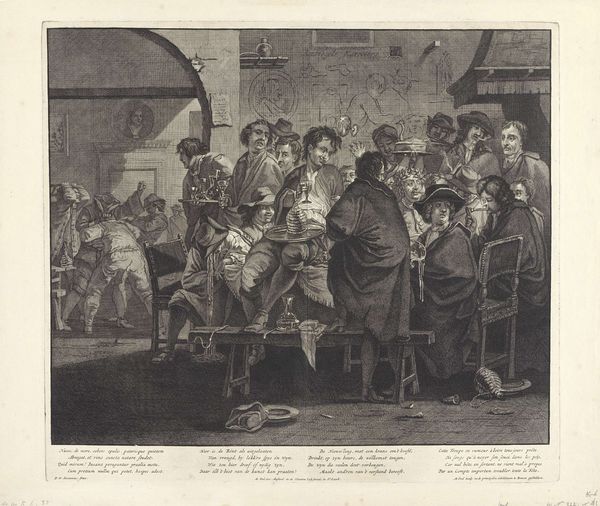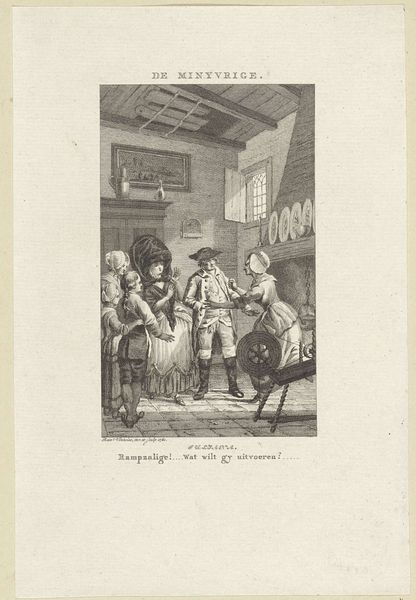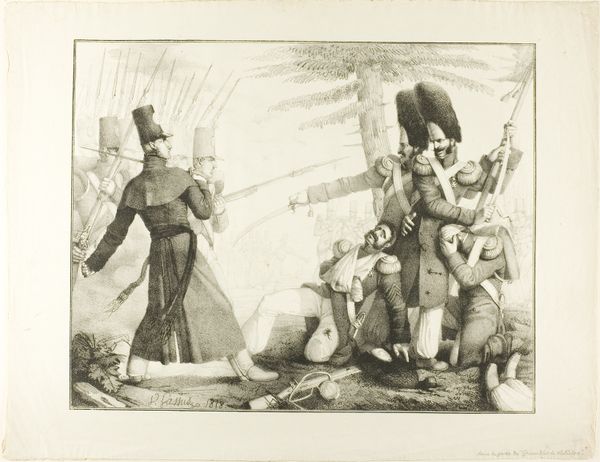
drawing, lithograph, print, ink, pencil
#
drawing
#
narrative-art
#
lithograph
# print
#
pencil sketch
#
figuration
#
ink
#
romanticism
#
pencil
#
history-painting
#
realism
Dimensions: height 230 mm, width 302 mm
Copyright: Rijks Museum: Open Domain
Curator: Here we have an image entitled "Beschieting door burgers van de Nederlandse fregatten, 1830", or "Shooting by citizens of the Dutch frigates, 1830." It is a print, likely a lithograph, dating from between 1830 and 1831 and comes to us from an anonymous artist. It depicts a scene of conflict during the Belgian Revolution. Editor: My first thought is how stark and urgent it feels. The use of simple lines gives it a sense of immediacy, as if it were sketched on the spot. It definitely evokes the tension of a city under siege. Curator: Precisely. What’s fascinating here is not just the event depicted—citizens defending their city against naval bombardment—but how it’s being framed. The presence of "N. Restaurateur" implies the citizens are near or using his restaurant for shelter or strategic positioning, almost giving the image the visual culture equivalent of a community rallying point. Editor: That focus on the citizen's defense brings to the fore the everyday. I am looking at the materials – what they would have had access to and the barrel, perhaps a wine barrel – used as a barricade speaks volumes. These weren't trained soldiers, they were civilians using what was at hand to protect themselves and their city. It highlights their resilience and adaptability in the face of conflict. Curator: Yes, there's a certain romanticism to the underdog narrative. Consider that this image, rendered as a print, becomes a readily reproducible piece of propaganda or journalistic record, circulated widely to sway public opinion and commemorate civic heroism. It really solidified that image of popular resistance, pushing it directly into the political and cultural sphere. Editor: It speaks to the social impact. Looking at it this way, it feels less like a grand historical statement, and more like a grassroots testament. It seems very material driven – the stone for the lithograph was easily available. Curator: A valuable point. The act of creating and distributing prints like these democratizes the historical record, bringing narratives of revolution to a broader audience. It is no longer the domain of academic painting but now readily accessible. Editor: Ultimately, it shows us the power of image-making and accessibility. To connect the struggles on a human scale is what this work, and works like it, do best. Curator: Absolutely. This piece offers more than just a glimpse into a specific historical event. It gives us a critical tool for thinking about art's public role and the power of imagery to shape our understanding of the world.
Comments
No comments
Be the first to comment and join the conversation on the ultimate creative platform.
